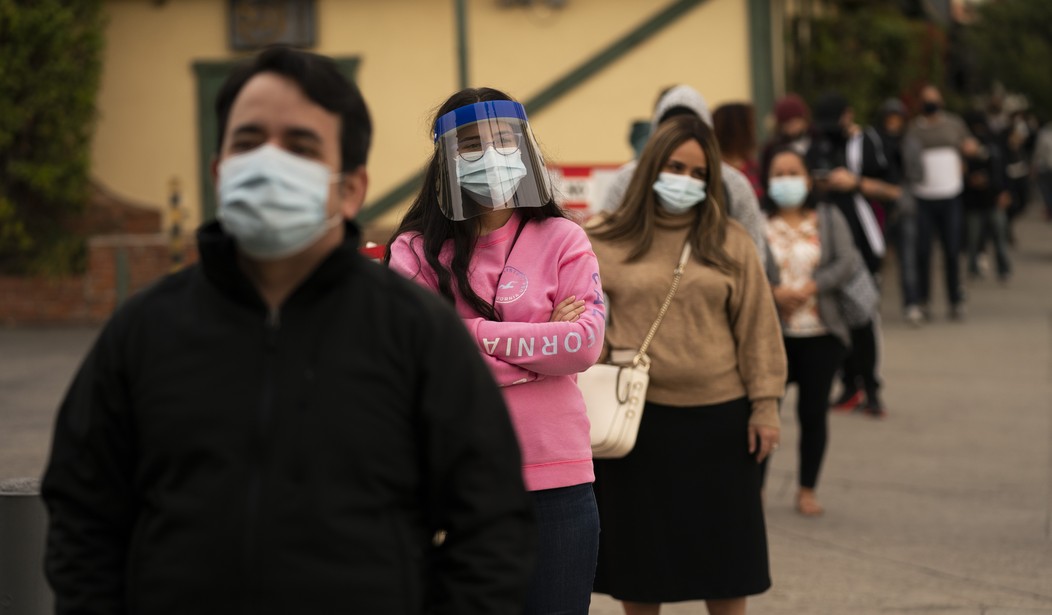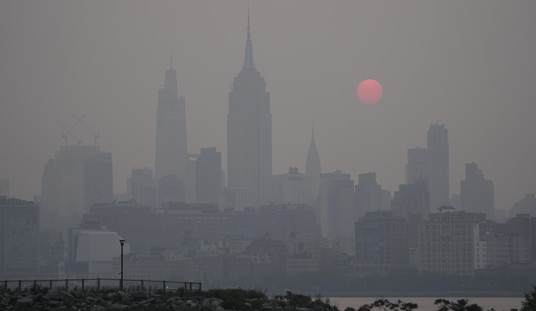Masks have become almost a religion for some, especially on the left where they have become an article of belief. Trust the “science,” these folks often bleat, knowing very little about the actual science.
But the science is and has been that masks may only prevent a possible large droplet spread from a person who has it. Most masks wouldn’t prevent smaller particles from being transmitted. Plus the concentration on masks as some kind of a “holy grail” leaves out a whole lot of other discussion: wearing them right, not to keep touching them, how they trap moisture increasing the favorable environment for viruses, not to mention washing hands.
Despite most of the country wearing masks in public, that hasn’t stopped the virus from spreading. So the answer then, must be “We must wear them even more!”
Now one would think that if masks were the magical protectant, you would see a difference between places that had mask mandates and those that did not.
Except that a recent study just blows a hole right through that.
In Florida, for example, most counties have so far bravely refused to implement mask mandates while others, usually in high population centers, have done so. Justin Hart and the team at Rational Ground (follow them on Twitter here – it’s worth it) just released a comprehensive data analysis of masked vs non-masked counties in the state. A total of 22 of 67 counties in the state have implemented a mask order at some point during the period of May 1 through December 15. It may not sound like many, but these include almost all of Florida’s largest metro areas. To be more than fair, if an area added a mask order at some point during the outbreak, the study’s authors gave a 14 day period to allow time for cases to begin subsiding. “Cases were summed for both mandate and non-mandate jurisdictions and adjusted per 100,000 people for days the mandates were or were not in effect,” wrote the authors, describing the methodology used.
So how did that work out?
“When counties DID have a mandate in effect, there were 667,239 cases over 3,137 days with an average of 23 cases per 100,000 per day. When counties DID NOT have a countywide order, there were 438,687 cases over 12,139 days with an average of 22 cases per 100,000 per day.”
So you mean there were actually more cases in the areas that had the mask mandates than those that did not? Population density? They accounted for that in the study.
Was it just Florida? No, they did a national assessment as well.
“When states DID have a mandate in effect, there were 9,605,256 cases over 5,907 total days and averaged 27 cases per 100,000 per day. When states DID NOT have a statewide order there were 5,781,716 cases over 5,772 total days averaging 17 cases per 100,000 people per day.”
So if all this is true, what does that say? If we care about the “science” where is the concern about this science and these statistics? Shouldn’t the places with fewer mask mandates have more issues? And yet, according to this study, it’s the opposite.
That's right. With mandates in place states say 10 more cases per 100K population. Here's the breakdown by state. Many states have had days with mandates (blue) and without (orange)
Drawn your own conclusions.
2/ pic.twitter.com/I2XknhFOQk— Justin Hart (@justin_hart) December 20, 2020
Another objection: "Well, we can never know for certain HOW MUCH WORSE it could have been without masks." First, that's not science – that's unfalsifiable nonsense.
Maybe consider that the virus is beyond your control. See these 6 states with different mandates. Up and down.
4/ pic.twitter.com/HT7Ne9z5o4— Justin Hart (@justin_hart) December 20, 2020
Another objection: "Well maybe people aren't really wearing masks!" We have you covered there. Here's an interactive tool allowing you to drill down on county-level covid cases mapped to a NYTimes survey on how people are wearing masks.
5/https://t.co/0aRywhIJVS— Justin Hart (@justin_hart) December 20, 2020
More from Ian. https://t.co/NhV3eMTJQn
— Justin Hart (@justin_hart) December 20, 2020
Meanwhile, this was pretty much Joe Biden’s entire campaign, even though he has no power to impose a national mandate. So once again, looks like Biden is wrong, as he has been on pretty much everything for 47 years.
So here’s the thing. How about more attention from the powers looking at such statistics to determine their validity? But now we’re months into the dictates and there doesn’t seem to be any desire to look at actual statistics when implementing such mandates and restrictions.














Join the conversation as a VIP Member